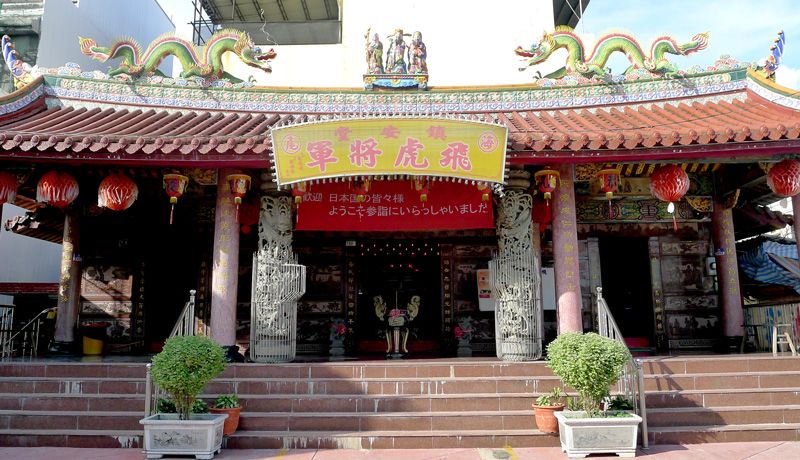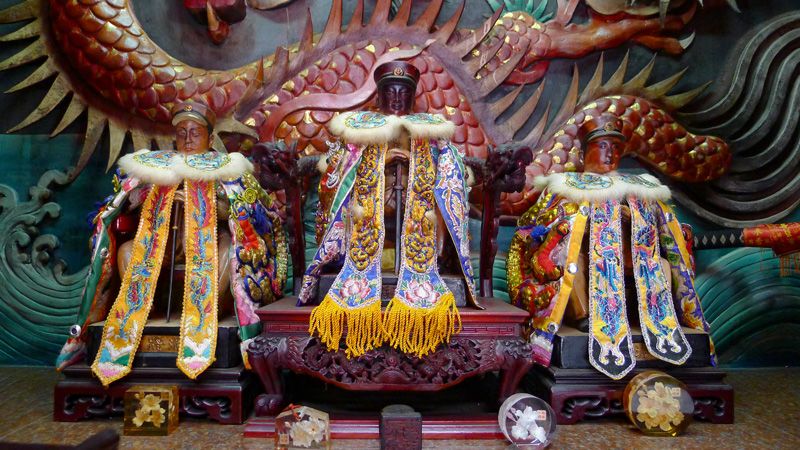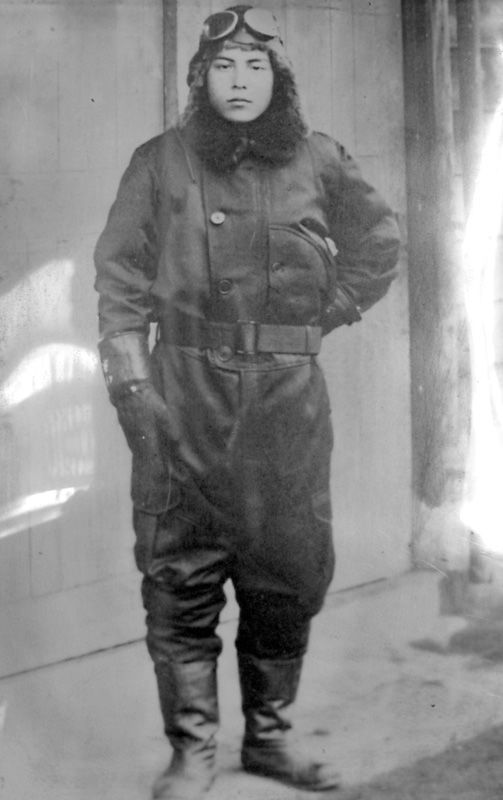Standing in a cabin on the ship Mata Hari, Ruth Russell-Roberts, a beautiful, willowy former model, embraced her husband Denis, an army officer. ‘The best I can hope for you is that you will become a prisoner of war,’ Ruth told Denis, as they held each other tightly.
‘And for you darling,’ he replied. ‘We must pray it will be Java and then Australia, eventually England.’ Despite their very British restraint, the moment was charged with emotion. They knew it would be months, if not years, before they would meet again.
Days earlier, Ruth had had a similarly agonising farewell on another ship, as she entrusted her one-year-old daughter, Lynette, to the care of a woman returning to England.
Amidst the apocalyptic chaos of the harbour as Japanese bombers screamed overhead and sirens wailed, Ruth hugged her daughter one last time, inhaling her soft baby scent, whispering endearments in her ear, before depositing the bewildered child in a makeshift playpen in the ship’s saloon.
Denis and Ruth Russell-Roberts with their daughter Lynette in Singapore, in September 1941
Then, with one last look, she walked down the gangplank, desperately holding back her tears.
Lynette’s ship was targeted by Japanese bombers almost as soon as it left Singapore, but somehow managed to make it across the Indian Ocean, and then on to the U-boat-infested Atlantic. Ruth would have to wait two and a half tortured years to learn if her daughter had survived.
Now, having parted from her baby, it was time to bid her husband farewell. Neither voiced the fear that it could be for ever.
It was February 12, 1942. The Japanese army had swept through Malaya and were advancing across Singapore Island.
They were now a few miles away from the harbour where the Mata Hari was waiting to depart, as part of an evacuation fleet hastily assembled to take the remaining Englishwomen and children from Singapore to the safety of Australia. The men remained to fight the Japanese at a last stand.
Under a sky blackened with smoke, the decks of every ship were crowded with couples and families all saying heart-wrenching goodbyes. Sobbing children had to be prised from their parents’ as bombs fell, fires raged on the quayside and artillery shells burst around them.
Amid the chaos, a sergeant’s wife threatened to jump overboard with her child if her husband went ashore without her. The kindly ship’s captain allowed him to remain onboard as a ship’s officer. A boatload of armed Australian soldiers suddenly tried to force their way on to the Mata Hari, determined to flee rather than fight. They were driven away at gunpoint.
T he ship was already overcrowded. Designed for cargo, crew and just nine passengers, it now had 483 people aboard.
After that last embrace with Ruth, Denis climbed into the launch to return ashore. ‘I watched the water widening between us,’ he later wrote.
As she sailed out of the harbour, amid the deafening noise of the desperate battle being waged inland, Ruth prayed that Denis would survive.
Two days later, the British commander, General Percival, surrendered to the Japanese and the defeated soldiers and remaining civilians were marched into captivity, Denis among them. Winston Churchill described the fall of Singapore, 75 years ago this month, as ‘the worst disaster’ in British history.
Denis and Ruth Russell-Roberts wedding at Holy Trinity, Brompton, London in May 1934
Among the many tragic tales arising from that defeat, the story of Denis and Ruth Russell-Roberts stands out as a heart-rending tale of love, and quiet courage in the face of war, epitomising the appalling suffering endured by so many men and women taken prisoner by the Japanese.
Ruth’s life before 1942 had ill-prepared her for the ordeal that lay ahead. She came from a well-to-do background and had spent her early adult life modelling for the couturier Norman Hartnell, racing cars at the famous Brooklands race track and skiing in Switzerland.
In 1932, she went to India to visit her sister and met army officer Denis Russell-Roberts, who was bowled over by her ‘rich, sunburnt beauty’. They married in 1934 and spent a blissful few years in India, playing tennis and polo, hunting tigers, taking moonlit boat rides across Kashmiri lakes.
In 1939, Denis was posted to Singapore and their life there continued on its glamorous trajectory: dances and cocktails at the famous Raffles hotel, swimming at the Tanglin Club, the social centre of ex-pat life. Ruth even learned to fly.
In January 1941, Lynette was born. The war that had seemed so far off now began to draw closer, but still most people were certain ‘Fortress Singapore’ could never fall to the ‘little yellow men’.
Then, on December, 8 the first Japanese bombs fell on Singapore and Japanese troops landed on mainland Malaya. In the weeks that followed, Allied troops, Denis Russell-Roberts among them, tried desperately to hold back the Japanese advance.
By the end of January even Singapore’s most optimistic inhabitants were growing anxious as the Japanese moved ever closer.
The colonial authorities were reluctant to order a civilian evacuation, afraid it would send ‘the wrong message’. Ruth did not want to leave Singapore without seeing Denis again.
By the time she was, at last, ordered to join the evacuation fleet, Singapore Island was almost overrun with Japanese troops. The Mata Hari was scarcely out to sea when Japanese bombers attacked. Remarkably, the bombs missed and she ploughed on south unscathed. By the following evening she had reached the Banka Straits, the narrow strip of sea between Banka Island and Sumatra, unaware that Japanese warships were close by. A grim game of ‘Blind Man’s Buff’ ensued as her captain was forced to dodge through an enemy fleet in the darkness.
Then, in the early hours of February 15, the dazzling spotlight of a Japanese warship caught the Mata Hari in its beam. The captain had no choice but to surrender.
The Japanese ordered the vessel into harbour on Banka Island. Ruth and her fellow passengers were made to disembark, taking one small suitcase each.
A fter spending the night huddled on the pier, they were marched to a squalid barracks and incarcerated along with survivors of other ships captured or sunk.
They were fortunate — many others had been massacred by the Japanese, including 21 Australian nurses who were machine-gunned on the beach.
On board ship Ruth had become friendly with a British nurse named Christine Bundy. They came to rely on each other in the months and years to come. Christine was practical, while Ruth’s joie de vivre was infectious. Back in Singapore, Denis was one of 50,000 men in Changi prisoner of war camp, in a barracks designed for 5,000.
On Banka, the women and children were separated from the men and moved to a camp on Sumatra, crammed into tiny houses and forced to sleep on concrete floors.
Their guards demanded servile obedience. Any woman who failed to bow was slapped viciously across the face. Some were beaten, or forced to stand out in the midday sun till they fainted.
They had to grow their own vegetables, chop wood and carry heavy loads. Twice a day, under the burning sun they had to stand to attention for ‘Tenko,’ the headcount.
Women like Ruth who had had servants to cook and clean for them, now found themselves reduced to ragged slaves, surviving on handfuls of rice.
Every few months the Japanese would herd them into lorries and move them to another camp.
To begin with, Ruth’s resilience saw her through. She joined the camp choir and, alarmed that the rice-only diet had made her stomach distended, she would jog around the camp’s barbed wire perimeter.
But as the months wore on and food became scarcer, Ruth and her companions grew thinner and weaker.
The makeshift camp hospital was permanently full as malnutrition caused the women’s limbs and bellies to swell with beri-beri. Tropical ulcers ate away at their flesh and dysentery was rife.
So starving were they that once, when a stray dog loped into the camp with a piece of liver in its mouth, the women snatched the liver, washed it and devoured it.
Meanwhile, the Japanese refused to hand out Red Cross food parcels that would have saved many lives. Instead, they ate the tinned food intended for the starving women and children.
The death toll mounted. A few women succumbed to the advances of the Japanese guards and sold their bodies for extra food to keep themselves or their children alive.
Those with money or jewels could exchange them for food from Chinese traders who came to the barbed wire surrounding the camp.
Ruth sold a pair of earrings, her engagement ring and a diamond wristwatch. But she would not sell her emerald, ruby and diamond eternity ring, a gift from Denis.
For many, the worst torment was not knowing what had happened to their loved ones. Ruth was desperate for contact with Denis. In May 1942, she had feigned toothache in order to go to the local hospital to meet a Chinese trader who regularly travelled to Singapore.
Risking torture or death by the Kempei Tai, the notorious Japanese secret police, if they were caught — communication with the outside world was strictly forbidden — she gave him a letter to take to Denis in Changi.
M iraculously, some months later it reached him. ‘I work hard here, cooking, scrubbing, cleaning, and I used to chop wood, but have had to give that up as it was too much for me,’ she wrote.
‘I live solely on the thought of being reunited with you and Lynette. Look after yourself darling, don’t worry about me,’ she told him bravely, ‘I can take it, Ruth.’
Denis treasured the letter, proof that Ruth was alive. But it was not until more than two years had passed that he was able to respond.
He made friends with a sergeant in the Japanese air force, who was going to Sumatra and persuaded the man to risk his life to take a letter to Ruth. By the time the sergeant reached the women’s camp in Sumatra, they were gone — they’d been moved again.
Now so emaciated that even sitting down was painful, Ruth and her fellow women were driven ever harder by the Japanese, labouring in the fields, carrying heavy loads till they collapsed.
Ruth’s friendship with Christine, together with the news that Lynette had arrived safely in England more than two years earlier, sustained her. She was determined to stay alive to be reunited with Lynette and Denis.
Then a virulent strain of malaria struck the camp. In January 1945, Ruth caught it and was admitted to hospital, desperately ill. Christine persuaded her to sell her eternity ring to buy food that might save her life.
Reluctantly, she agreed. The woman who exchanged it through the barbed wire brought back with her not only food but a folded piece of paper. It was Denis’s letter, at last.
Lieut-General A.E. Percival, Commanding chief of the last garrison of Singapore is on his way to sign the deed of its surrender in 1942
Christine read it to Ruth. He wrote of his life in Changi and ‘of our reunion which . . . could not now be long delayed’.
She was now too weak to speak but she nodded and smiled. Then she turned over onto her side and drew her last breath. The next day she was buried in the jungle, another wooden cross in the makeshift cemetery that was rapidly filling up.
Eight months later the Japanese surrendered.
Back in Singapore, Denis was desperate to be reunited with his darling wife. On September, 14 he received the message he had been waiting for. The women prisoners from Sumatra were due to arrive at Singapore’s Alexandra Hospital shortly.
It was only when he saw the women walking towards him, ill, weary and thin that he felt ‘a lump come into my throat, and for the very first time a little stab of pain, of dread of what might be’.
He spotted Ruth’s friend Christine, but not Ruth. Then Christine came over to him. ‘She was overcome and found it difficult to say anything. She squeezed my hand and whispered in my ear, “I’m so sorry, Denis.” It was just like that.’
Unable to speak, Denis turned and walked away, and kept on walking until, alone, ‘I lay on my bed and allowed my feelings to take control’.
Some weeks later, he returned to England, to the daughter he had not seen for more than three years.
‘I looked at her intently, half consciously searching for a likeness to Ruth .. . as though she saw the look of uncertainty in my face, she took me firmly by the hand and led me into the garden.’
Twenty years after the war, by then remarried, he published a touching memoir, Spotlight On Singapore, telling the story of his and Ruth’s captivity.
He wrote it as a tribute not only to Ruth and her fellow prisoners, but to the Japanese sergeant who had risked his life to take the letter to Ruth that she read before she died — a last token of love from the husband with whom she had so longed to be reunited.


























